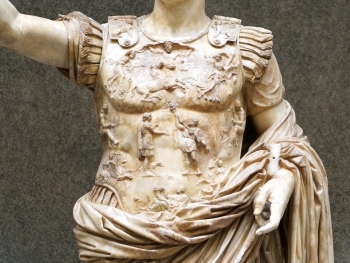The Oxford Encyclopedia of Ancient Egypt is a monumental work in the field of Egyptology, offering an exhaustive and scholarly examination of ancient Egyptian civilization. Edited by Donald B. Redford and published by Oxford University Press, this three-volume encyclopedia stands out as one of the most comprehensive and authoritative resources available to both scholars and enthusiasts of ancient Egypt. This detailed post delves into the various aspects that make this encyclopedia a scholarly treasure trove.
Comprehensive Scope and Structure
The Oxford Encyclopedia of Ancient Egypt is meticulously organized into three volumes, encompassing over 600 articles. Each article is crafted by experts in the field, ensuring that the information presented is both accurate and insightful. The scope of the encyclopedia covers a vast array of topics, which can be broadly categorized into several key areas:
- History and Chronology: This section provides detailed accounts of ancient Egypt’s historical periods, from the Prehistoric era to the Greco-Roman period. Articles in this section explore significant dynasties, notable pharaohs, and pivotal historical events that shaped the course of Egyptian history. Readers can gain a deep understanding of the chronological progression of Egyptian civilization and the factors that influenced its development.
- Religion and Mythology: Ancient Egyptian religion and mythology are thoroughly examined, with entries on gods and goddesses, religious practices, temples, and funerary customs. This section elucidates the complex belief systems and rituals that were integral to Egyptian society, providing insights into how religion influenced daily life, governance, and art.
- Society and Daily Life: Articles in this section cover the social structure of ancient Egypt, including roles of women, family dynamics, education, and professions. This exploration of daily life offers a window into the experiences of ordinary Egyptians, highlighting the societal norms and values that underpinned their world.
- Art and Architecture: The encyclopedia provides extensive coverage of Egypt’s artistic and architectural achievements. Detailed descriptions of major structures like pyramids, temples, and tombs are included, along with discussions on various art forms such as sculpture, painting, and jewelry. This section helps readers appreciate the aesthetic and technical sophistication of Egyptian art and architecture.
- Language and Literature: The development of the Egyptian language, including hieroglyphics, is comprehensively explored. Key literary works, such as the Pyramid Texts and the Book of the Dead, are analyzed, providing insights into the literary and intellectual culture of ancient Egypt.
- Economy and Trade: This section examines the economic foundations of ancient Egyptian society, including agriculture, craft production, and trade networks. Articles detail how resources were managed and traded, both within Egypt and with neighboring regions, highlighting the economic interconnections of the ancient world.
- Science and Technology: The encyclopedia also covers the scientific and technological advancements made by ancient Egyptians. Topics include medicine, astronomy, mathematics, and engineering, showcasing the innovative spirit and intellectual achievements of this ancient civilization.
Notable Features
The Oxford Encyclopedia of Ancient Egypt boasts several features that enhance its value as a scholarly resource:
- Authoritative Contributions: Each article is authored by a leading Egyptologist or scholar, ensuring that the information is both reliable and cutting-edge. The contributors bring diverse perspectives and expertise, enriching the content and providing a well-rounded understanding of ancient Egypt.
- Interdisciplinary Approach: The encyclopedia integrates insights from various disciplines, such as archaeology, history, anthropology, and art history. This interdisciplinary approach allows for a more comprehensive and nuanced exploration of ancient Egyptian civilization.
- User-Friendly Organization: The encyclopedia is organized alphabetically, with a detailed index and cross-references that make navigation straightforward. This user-friendly design facilitates easy access to information, whether for casual reading or in-depth research.
- Illustrations and Maps: The inclusion of numerous illustrations, photographs, and maps enhances the textual content, providing visual context and aiding in the understanding of complex topics. These visual aids are particularly valuable for appreciating the artistic and architectural accomplishments of ancient Egypt.
Academic and Educational Significance
The Oxford Encyclopedia of Ancient Egypt is an indispensable resource in both academic and educational contexts:
- Research Tool: For scholars and researchers, the encyclopedia serves as a foundational reference work. The detailed articles and extensive bibliographies support in-depth research and facilitate further study. It is an essential tool for anyone conducting scholarly work on ancient Egypt.
- Teaching Resource: Educators can utilize the encyclopedia as a teaching aid, drawing on its comprehensive coverage to support lesson plans and lectures. The clear and accessible writing style makes it suitable for students at various levels of education, from secondary school to university.
- Public Engagement: Public libraries and museums also benefit from including the encyclopedia in their collections. It supports public education initiatives, exhibitions, and cultural programs, helping to disseminate knowledge about ancient Egypt to a broader audience.
Impact on the Field of Egyptology
The Oxford Encyclopedia of Ancient Egypt has had a profound impact on the field of Egyptology. By compiling the collective knowledge and expertise of numerous scholars, it has created a valuable resource that facilitates a deeper understanding of ancient Egyptian civilization. The encyclopedia has also promoted interdisciplinary research and collaboration, encouraging scholars to explore new perspectives and methodologies.
Furthermore, the encyclopedia has contributed to making the study of ancient Egypt more accessible to a wider audience. Its comprehensive and engaging content has inspired interest and curiosity in the ancient world, fostering a greater appreciation for the achievements and legacy of ancient Egypt.
Conclusion
The Oxford Encyclopedia of Ancient Egypt is truly a scholarly treasure trove. Its extensive and authoritative coverage of ancient Egyptian history, culture, religion, and more makes it an invaluable resource for anyone interested in this fascinating civilization. Whether used for academic research, educational purposes, or personal interest, the encyclopedia stands as a testament to the enduring legacy of ancient Egypt and the ongoing quest to understand its mysteries.




